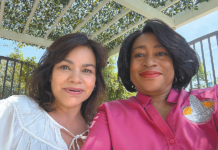
LACERS BOARD UPDATE
By Michael R. Wilkinson, LACERS Commissioner
Email: MikeWilkinson4LACERS@gmail.com
N
EPC, LACERS’ investment consultant, just reported to the LACERS board on the current trends for active versus passive investments.
Following up on last month’s discussion of passive and active investing, I’ll now share specific methods that LACERS has for putting them into practice.
To recap on definitions, “active investing” means the use of a money manager to buy and sell individual investments such as stocks that aims to produce returns that are higher than an index, such as the S&P 500 stock index. “Passive investing” is a strategy to pick investments that mirror the index. This is a system to buy all the investments in the index in the same proportion as the index.
Which is better? As with many interesting questions, the answer is, it depends. However, institutional investors have been increasing their investing in passive strategies from $7 trillion in passive investing 10 years ago to $20 trillion today, according to Pension and Investments magazine quoted by NEPC.
NEPC ran two tests that were designed to help decide which asset classes made sense to invest with actively and which were best passively managed based on how active managers have done against passive investing in the past. Based on these tests, NEPC has reviewed many different asset classes and lists which classes make sense to keep in active management and which could be profitably invested passively.
It is way too much detail to go into a discussion here of asset class by asset class to report on the recommendations. However, it follows the discussion in my previous article that certain asset classes fall naturally into the group that’s appropriate for passive treatment and others do not.
Finally, NEPC reported on the active versus passive allocation of other large public pension fund clients without naming them. LACERS is 71 percent active and 30 percent passive, while the other pension plans used strategies that ranged from 100 percent active with zero passive, to 50 percent active and 50 percent passive.
So, where do we go? Active management has its place, but LACERS will continue to look at low-cost passive investments where that makes sense












